-
Introduction
A cat’s digestive system is designed for frequent, small meals throughout the day. Unlike dogs who can be content with one or two larger meals, cats benefit from having a consistent source of food available. This grazing behavior allows them to regulate their energy intake and keep their digestive system functioning smoothly. The right feeding supplies can encourage this natural behavior and make mealtime an enjoyable experience for both you and your cat.
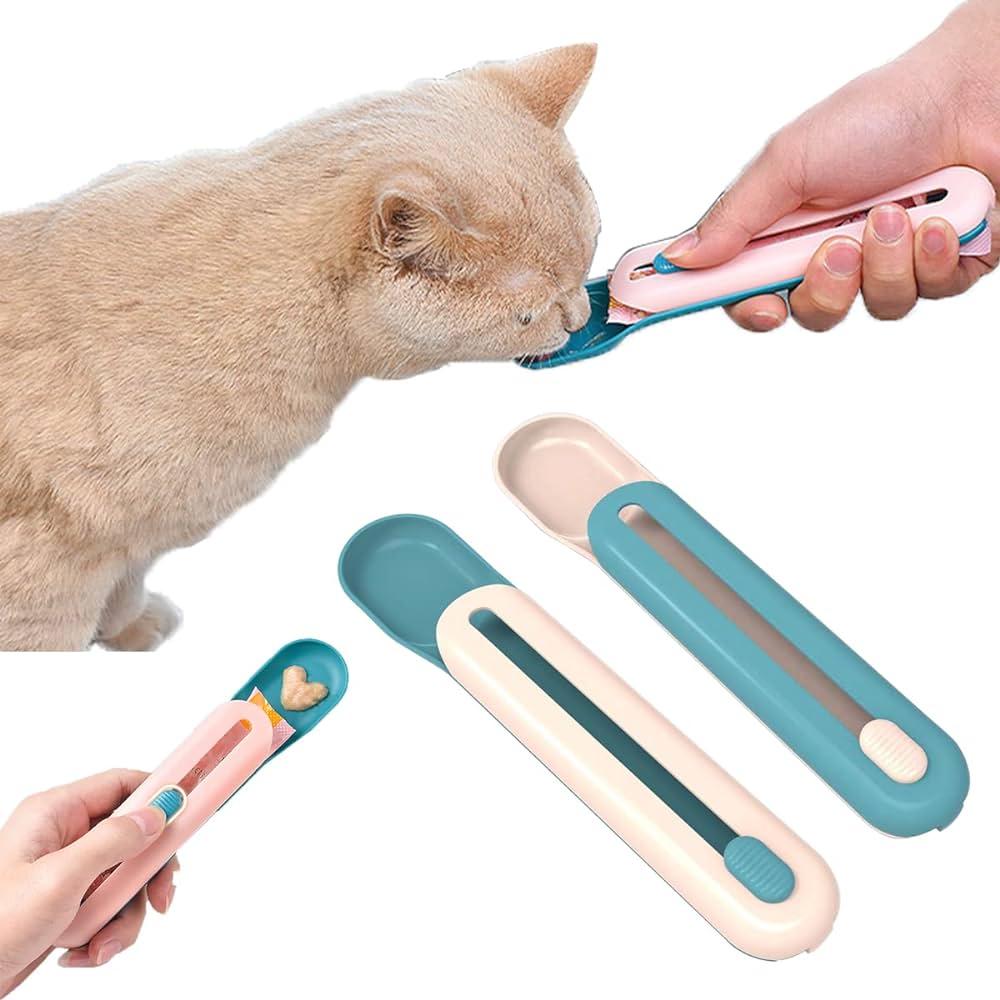
-
Cat Food Bowls: Dining in Style and Comfort
Cat food bowls are the foundation of your cat’s feeding station. When choosing bowls, consider the following factors:
- Material: Stainless steel, ceramic, and plastic bowls each have their advantages and disadvantages. Stainless steel bowls are durable, easy to clean, and hygienic, but some cats may find the clinking sound of their metal collar against the bowl unsettling. Ceramic bowls are also easy to clean and come in a wider variety of colors and designs. Plastic bowls are lightweight and affordable, but may scratch more easily and harbor bacteria in the grooves if not cleaned properly.
- Size and Shape: The size of the bowl should be appropriate for your cat’s breed and age. Kittens will need smaller bowls to comfortably reach their food, while larger breeds may benefit from wider bowls to prevent whisker fatigue. Shallow bowls with a wider opening are generally preferred by cats, as they allow them to eat in a more natural, head-on position.
- Elevated Bowls: Elevated bowls can improve your cat’s posture while eating, reducing neck strain and discomfort. This is especially beneficial for senior cats or those with mobility issues. Elevated bowls come in various heights and styles, so you can choose one that complements your home décor.
- Non-Slip Bases: A non-slip base on your cat’s food bowl is essential to prevent it from sliding around while they eat. This reduces frustration for your cat and keeps mealtime mess to a minimum. Look for bowls with a rubberized ring around the bottom or a built-in non-slip base.
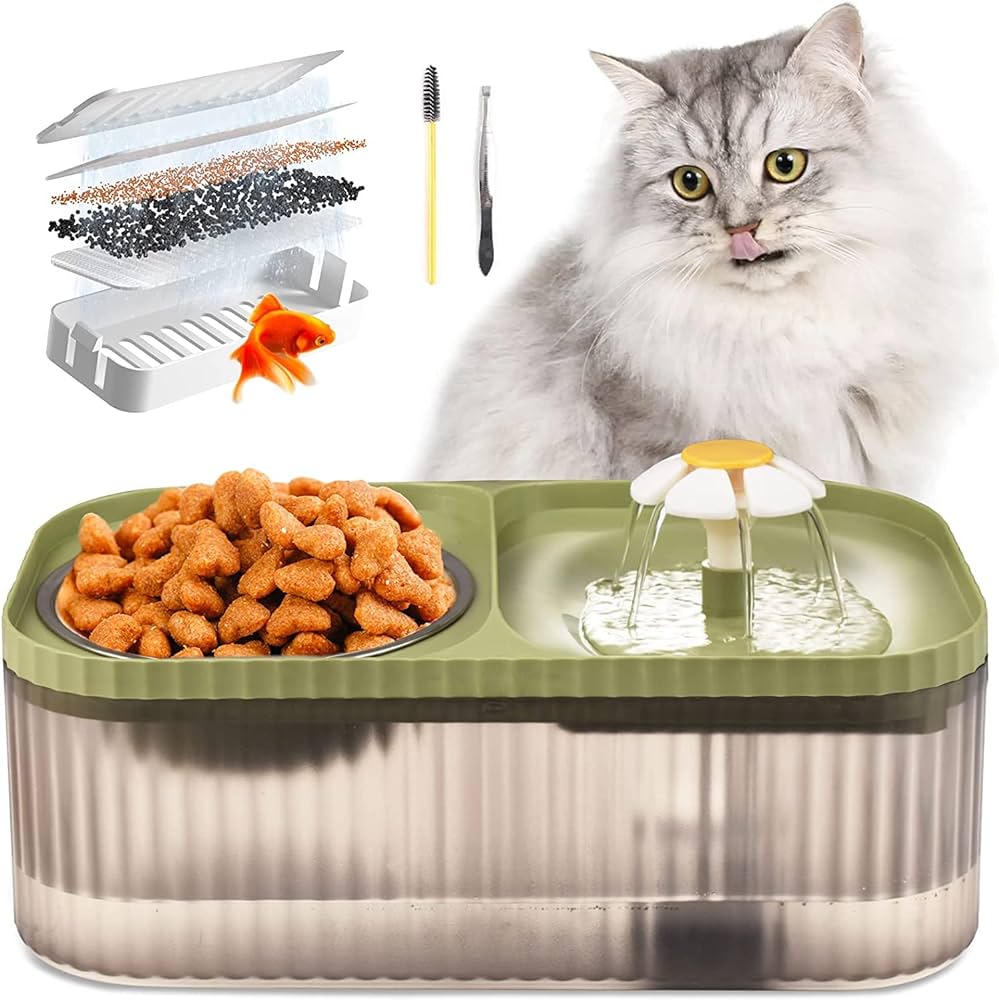
III. Food and Water Dispensers: Convenience and Freshness
For busy pet owners or those with cats on a specific feeding schedule, automatic feeders and water dispensers can be a lifesaver. Here’s a breakdown of the different options:
- Automatic Feeders: These electronic devices dispense pre-portioned meals at programmed times throughout the day. This ensures your cat has access to food even when you’re not home. Some automatic feeders offer features like voice recording to call your cat to eat or a built-in camera to monitor their eating habits remotely.
- Gravity Feeders: Gravity feeders are a simpler alternative that work by relying on gravity to refill the bowl as your cat eats. These are a good option for cats who self-regulate their food intake, but may not be suitable for cats prone to overeating or if you have multiple cats in one household.
- Water Fountains: Encouraging your cat to drink plenty of water is essential for their health. Water fountains offer a continuous stream of fresh, moving water, which is more appealing to some cats than a stagnant bowl of water. Choose a fountain with a quiet pump and easy-to-clean design to ensure it doesn’t become a source of noise or frustration for you or your cat.
- Food and Water Storage Containers: Keeping your cat’s food fresh and preventing spills is important. Airtight containers made from high-quality materials like BPA-free plastic or stainless steel help preserve the flavor and nutritional value of dry food and prevent kibble from becoming stale. Choose containers that are the right size to hold your cat’s food without overflowing and ensure they have a secure closure to keep out moisture and pests.
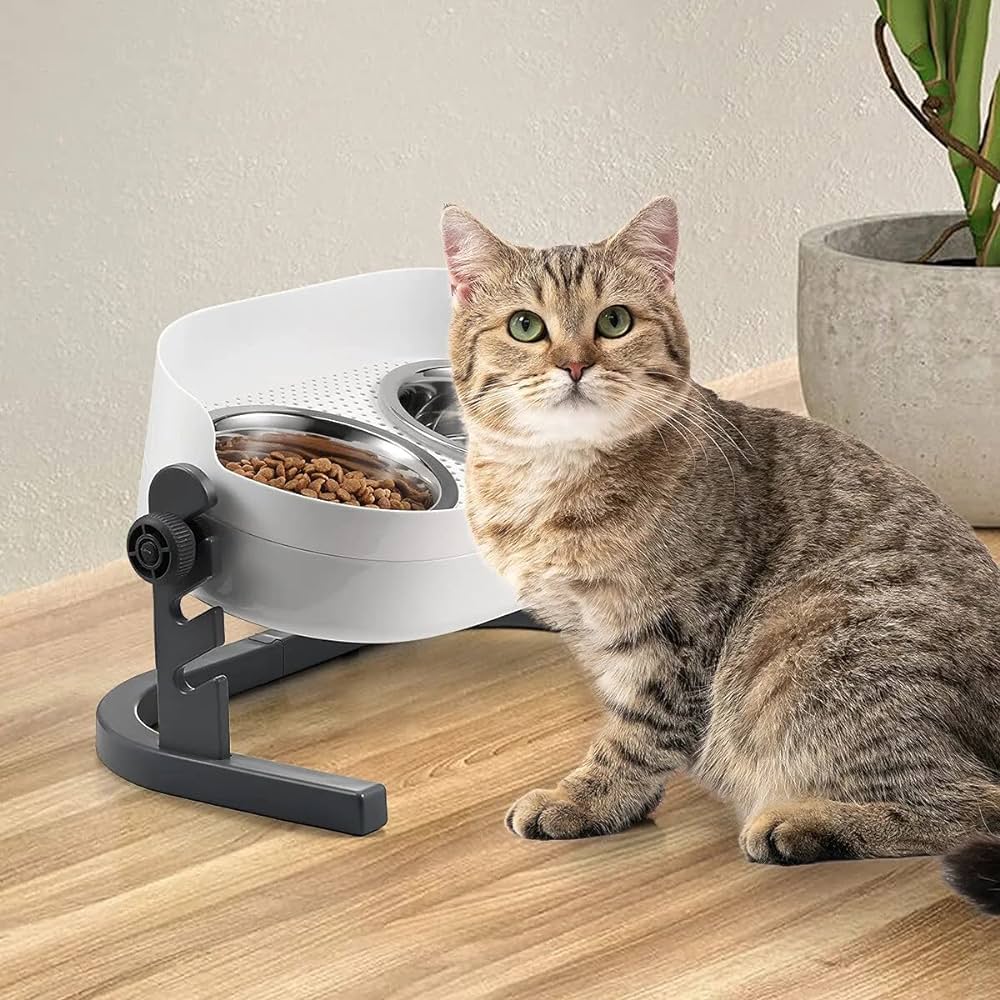
IV. Cat Mats: Protecting Your Floors and Keeping Your Cat Clean
- Purpose and Benefits (continued): …eating area can help with behavioral training and keep your cat’s food and water bowls away from high-traffic areas in your home.
- Material and Size: Choose a mat made from a durable and easy-to-clean material. Silicone mats are popular because they are waterproof, non-slip, and can be washed easily with soap and water. Fabric mats may be more aesthetically pleasing, but ensure they are machine-washable and made from a material that won’t fray or harbor bacteria. Select a mat size that accommodates your cat’s food and water bowls comfortably, with some extra space around the edges to catch spills and stray kibble.
- Non-Slip Backing: A non-slip backing is crucial to prevent the mat from sliding around while your cat eats. This creates a secure dining area for your feline friend and reduces the risk of them tipping over their food or water bowls.
- Easy Cleaning: Choose a mat that is easy to clean by hand or in the dishwasher. Look for mats with a smooth surface that doesn’t trap food particles or debris. Regular cleaning of the mat is essential to prevent the buildup of bacteria and maintain a hygienic feeding environment for your cat.
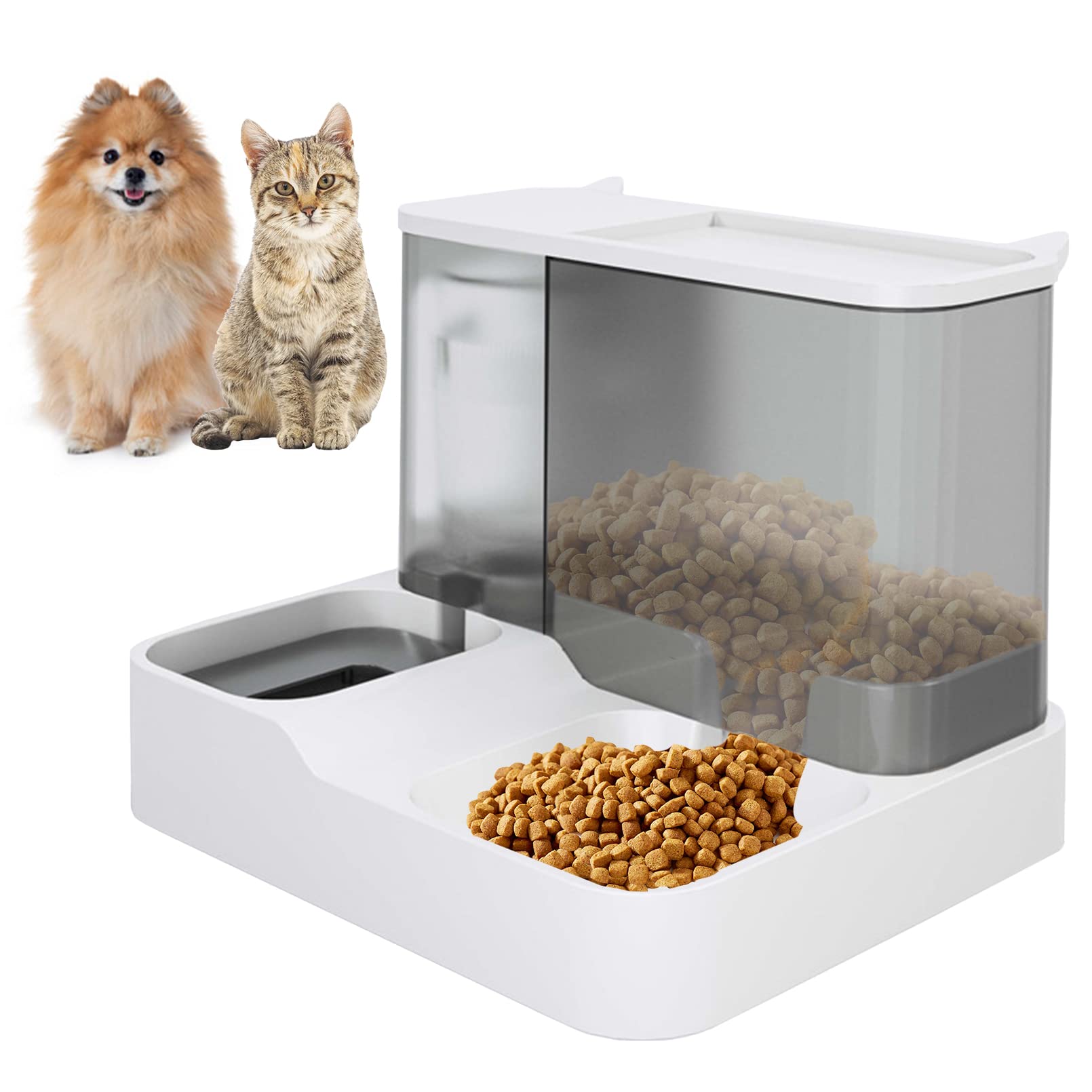
-
Food and Water Accessories: Enhancing Your Cat’s Dining Experience
Beyond the basic necessities, there are a variety of accessories available to make mealtime more enjoyable and functional for your cat:
- Slow Feeder Bowls: These bowls have raised ridges or maze patterns that slow down your cat’s eating pace. This can help prevent gulping, which can lead to vomiting and digestive issues. Slow feeder bowls are also beneficial for overweight cats, as they encourage them to eat more slowly and feel fuller on smaller portions.
- Food Warmers: Some cats prefer their food to be slightly warm. Food warmers are electric mats that keep your cat’s food at a comfortable temperature, especially during colder months. These can be helpful for picky eaters or senior cats with a decreased sense of smell.
- Water Filters: Water filters can improve the taste and quality of your cat’s drinking water. This can encourage them to drink more, which is essential for their urinary tract health. Choose a water filter specifically designed for pet fountains and replace it regularly according to the manufacturer’s instructions.
- Food and Water Bowls with Built-in Lights: These bowls have LED lights that illuminate your cat’s feeding area in low-light conditions. This can be helpful for nighttime feedings or for cats with vision problems.
-
Cleaning and Maintenance: Keeping Feeding Supplies Hygienic
Maintaining clean feeding supplies is essential for your cat’s health and well-being. Here are some key points to remember:
- Regular Washing: Wash your cat’s food and water bowls daily with warm, soapy water. Be sure to rinse them thoroughly to remove any food residue or soap scum. You can also wash cat mats by hand or in the washing machine according to the care instructions.
- Deep Cleaning: Deep clean your cat’s food and water bowls, as well as any feeding mats, periodically using a solution of vinegar and water or a mild pet-safe disinfectant. This removes any lingering bacteria or odors that may not be eliminated by regular washing.
- Preventative Measures: Place mats under your cat’s food and water bowls to catch spills and prevent food debris from accumulating on your floors. This will minimize the cleaning required after each mealtime.
- Replace Worn-Out Items: Inspect your cat’s feeding supplies regularly for signs of wear and tear, such as cracks, chips, or deep scratches. Replace any damaged items promptly to ensure hygiene and safety. Worn-out bowls or mats can harbor bacteria and may be uncomfortable for your cat to use.
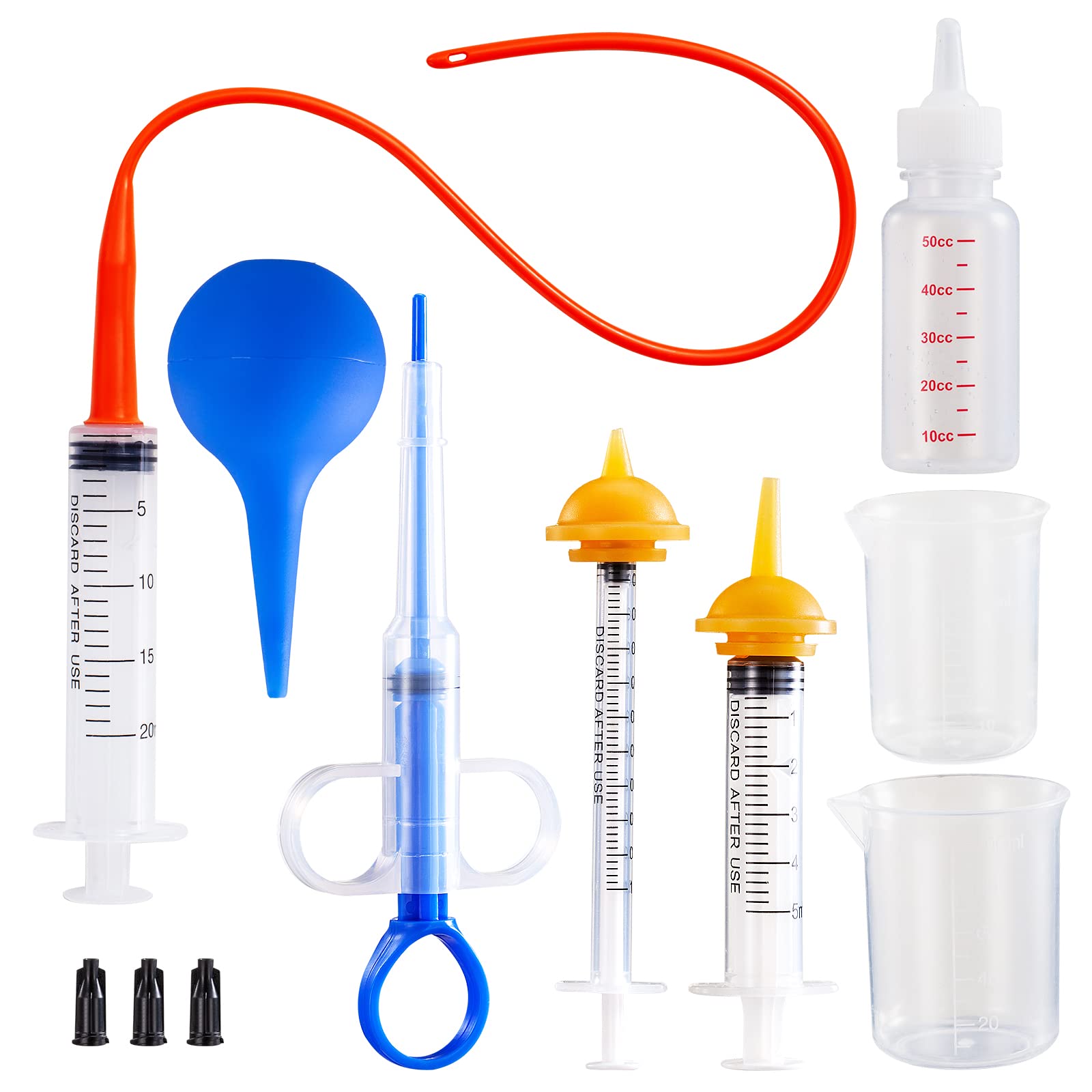
VII. Additional Tips for Optimal Cat Feeding
Here are some additional tips to ensure your cat has a positive and healthy mealtime experience:
- Consult Your Veterinarian: Discuss your cat’s dietary needs with your veterinarian. They can help you choose the right type of food, portion size, and feeding schedule based on your cat’s age, breed, and activity level.
- Establish a Feeding Schedule: Maintaining a consistent feeding schedule helps regulate your cat’s digestive system and prevents them from overeating or becoming stressed due to unpredictable mealtimes.
- Monitor Food and Water Intake: Keep an eye on how much food and water your cat consumes daily. Any significant changes in their eating or drinking habits could be a sign of an underlying health issue. Consult your veterinarian if you notice any concerning changes.